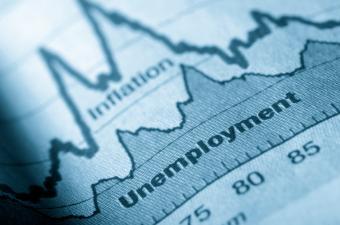The unemployment rate edged down to 7.2 percent in September as the economy added 148,000 jobs, the ""Bureau of Labor Statistics"":http://www.bls.gov/ (BLS) revealed in its monthly ""Employment Situation Report"":http://www.bls.gov/news.release/empsit.htm.
[IMAGE]The report, released weeks late as a result of the partial government shutdown, also showed revisions in job growth for July (down from 104,000 to 89,000) and August (up from 169,000 to 193,000). With these revisions, employment gains for the two months were 9,000 more than previously reported.
Though down only slightly month-to-month, the unemployment rate fell a total of 0.4 percentage points over the third quarter, with the number of unemployment persons dropping 522,000 since June.
The U6 unemployment rate, which includes people employment part-time for economic reasons and those ""marginally attached to the labor force,"" eased slightly to 13.6 percent. The U6 rate is considered by some to be a more reliable indicator of the country's economic health than the overall national rate.
According to BLS, some of the biggest job gains in September were in construction, a field struggling in terms of labor availability. Employment in construction was up 20,000 last month after showing little change over the six months prior.
Other major gains were seen in transportation and warehousing (+23,000); wholesale trade (+16,000); and professional and business services (+32,000).
After slipping by 3,000 in August, employment in the financial activities fell another 2,000 in September. The biggest culprit for the decline was ""credit intermediation and related activities""--a category that includes mortgage and loan brokerage--where employment dropped by 8,000.
With a few exceptions, employment in most other major industries showed little change, BLS reported.
September's weak job growth may act as a deterrent for the Federal Reserve to begin tapering its bond purchases. The Fed has established that it intends to keep interest rates low until indicators show a much healthier economy, with an unemployment rate of 6.5 percent or below being one of the signs. While the Fed has signaled it may start slowing down its efforts, the timeline for that is still unknown.
The number of long-term unemployed (those jobless for 27 weeks or more) was about 4.1 million, down from 4.3 million in August. Those individuals accounted for 36.9 percent of the employed.
The labor force participation rate was a seasonally adjusted 63.2 participant, flat from August. Over the year, the labor force participation rate--which measures the labor force as a percent of the population--has declined 0.4 percentage points.
The average workweek for all employees on private, nonfarm payrolls was 34.5 hours, unchanged from the prior month. Average hourly earnings for all employees was $24.09, up three cents.

 theMReport.com Your trusted source for mortgage banking news
theMReport.com Your trusted source for mortgage banking news









